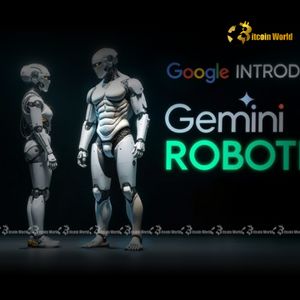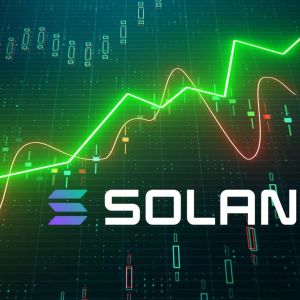BitcoinWorld Google Gemini Robotics: How On-Device AI Revolutionizes Autonomous Robot Control In the rapidly evolving world of technology, where decentralization meets cutting-edge innovation, the intersection of AI and robotics is creating unprecedented possibilities. While much of the AI conversation revolves around cloud-based models, a quiet revolution is brewing at the edge. Imagine a future where robots operate with unparalleled autonomy, making decisions and executing complex tasks without a constant internet connection. This isn’t science fiction anymore; it’s the groundbreaking reality ushered in by Google DeepMind’s latest advancement: the Google Gemini Robotics On-Device model. For those tracking the pulse of innovation, from blockchain breakthroughs to AI marvels, this development signals a pivotal shift in how we conceive and interact with intelligent machines. The Dawn of Autonomous AI: Google Gemini Robotics Takes Center Stage Google DeepMind, a pioneer in artificial intelligence research, has once again pushed the boundaries with its new Google Gemini Robotics On-Device model. Building upon the foundational Gemini Robotics model released earlier this year, this iteration marks a significant leap forward by enabling AI to run directly on robotic hardware. This local execution capability is a game-changer, removing the dependency on cloud servers and ushering in an era of truly autonomous robotic operations. The implications are vast, impacting everything from industrial automation to personal assistance robots, making them more reliable, responsive, and secure. This innovation highlights Google’s commitment to advancing practical AI applications that can function independently of constant network access. Unleashing Potential: What is Google Gemini Robotics On-Device? So, what exactly makes Google Gemini Robotics On-Device so remarkable? At its core, this new language model empowers robots to perform intricate tasks locally. This means the robot itself processes information and executes commands, significantly reducing latency and enhancing operational reliability, especially in environments with limited or no internet connectivity. Developers can interact with and fine-tune the model using natural language prompts, simplifying the programming process and opening up new avenues for customization. Google’s benchmarks indicate that this On-Device AI model performs at a level comparable to its cloud-based predecessor, a testament to its efficiency and power. Furthermore, it reportedly outperforms other on-device models in general benchmarks, solidifying its position as a frontrunner in the field. This capability allows robots to learn and adapt more quickly, responding to dynamic environments with greater agility and precision. How Does On-Device AI Transform Robot Control? The true power of On-Device AI lies in its ability to fundamentally transform robot control . By integrating the AI model directly onto the robot, decision-making becomes instantaneous. Consider the practical benefits: Reduced Latency: Commands are processed milliseconds faster, crucial for precision tasks and dynamic environments where immediate reactions are vital. Enhanced Privacy and Security: Data processing occurs locally, minimizing the need to send sensitive information to the cloud, which is particularly important for sensitive applications. Offline Capability: Robots can operate reliably in remote locations or during network outages, ensuring continuous productivity and mission completion. Adaptive Learning: The model can be fine-tuned on the fly using natural language, allowing for rapid adaptation to new tasks or environmental changes without extensive reprogramming. Google DeepMind demonstrated these capabilities with robots successfully performing complex actions like unzipping bags and folding clothes. While initially trained for ALOHA robots, the model’s adaptability was showcased by its successful implementation on a bi-arm Franka FR3 robot and Apptronik’s Apollo humanoid robot. The Franka FR3, for instance, tackled novel scenarios and objects, including industrial assembly tasks on a moving belt, proving the model’s robust generalization abilities. This level of autonomous control opens doors for robots to take on increasingly complex and varied roles in our daily lives and industries. Real-World Applications and the Future of AI in Robotics The implications of advanced AI in Robotics are profound, extending far beyond the factory floor. With models like Gemini Robotics On-Device, we are witnessing the dawn of a new era for automated systems. Imagine: Logistics and Warehousing: Robots autonomously managing inventory, sorting packages, and navigating complex warehouse layouts without constant human oversight or internet dependency, leading to unprecedented efficiency. Healthcare: Robotic assistants performing delicate tasks in operating rooms or aiding patients in their homes, with critical data processed securely on-device, enhancing patient care and safety. Disaster Response: Robots deployed in hazardous environments, making real-time decisions to navigate debris, search for survivors, or handle dangerous materials, even in communication-blackout zones, protecting human lives. Personal Robotics: More intelligent and responsive home robots capable of performing a wider range of chores and interactions, adapting to unique household needs and preferences. To further empower developers, Google DeepMind is also releasing a Gemini Robotics SDK. This Software Development Kit allows developers to train robots on new tasks by showing them 50 to 100 demonstrations within the MuJoCo physics simulator. This democratizes robot training, enabling rapid prototyping and deployment of new robotic functionalities across various sectors. The Broader Landscape: DeepMind AI and the Robotics Ecosystem Google’s advancements are part of a larger, exciting trend within the tech industry, highlighting the growing convergence of advanced DeepMind AI and robotics. Several other major players and innovative startups are also making significant strides in this domain: Nvidia: Actively building a platform designed to create foundational models specifically for humanoid robots, emphasizing simulation and real-world transfer learning. Hugging Face: Known for its open-source contributions in natural language processing, Hugging Face is expanding into robotics by developing open models and datasets, and even working on physical robots, fostering a collaborative development environment. RLWRLD (Mirae Asset-backed Korean startup): Focused on creating foundational models for robots, aiming to provide a universal AI layer for various robotic applications, driving standardization and accessibility. This competitive yet collaborative environment is accelerating innovation, pushing the boundaries of what robots can achieve. The drive towards more intelligent, autonomous, and adaptable robots is a shared vision, and Google DeepMind’s Gemini Robotics On-Device is a significant milestone on this journey. As these technologies mature, they promise to redefine industries, enhance human capabilities, and create a future where intelligent machines seamlessly integrate into our lives. The release of Google DeepMind’s Gemini Robotics On-Device model represents a monumental leap forward for AI in robotics. By enabling powerful language models to run locally on robots, Google is not just improving efficiency; it’s fundamentally reshaping the potential for autonomous systems. From enhanced privacy and security to unparalleled reliability in disconnected environments, the benefits are clear. As developers gain access to tools like the Gemini Robotics SDK, we can expect an explosion of innovation in robot capabilities. This groundbreaking development, alongside the efforts of other industry leaders, is propelling us towards a future where intelligent robots are not only more capable but also more accessible and integrated into the fabric of our society. The era of truly smart, self-sufficient robots is here, promising to transform our world in profound and exciting ways. To learn more about the latest AI market trends, explore our article on key developments shaping AI Models features. This post Google Gemini Robotics: How On-Device AI Revolutionizes Autonomous Robot Control first appeared on BitcoinWorld and is written by Editorial Team



















